Domiciliary care planning software
Care Planning
Make your care planning digital, with centralised, interconnected and shareable information about your clients just a click or tap away.
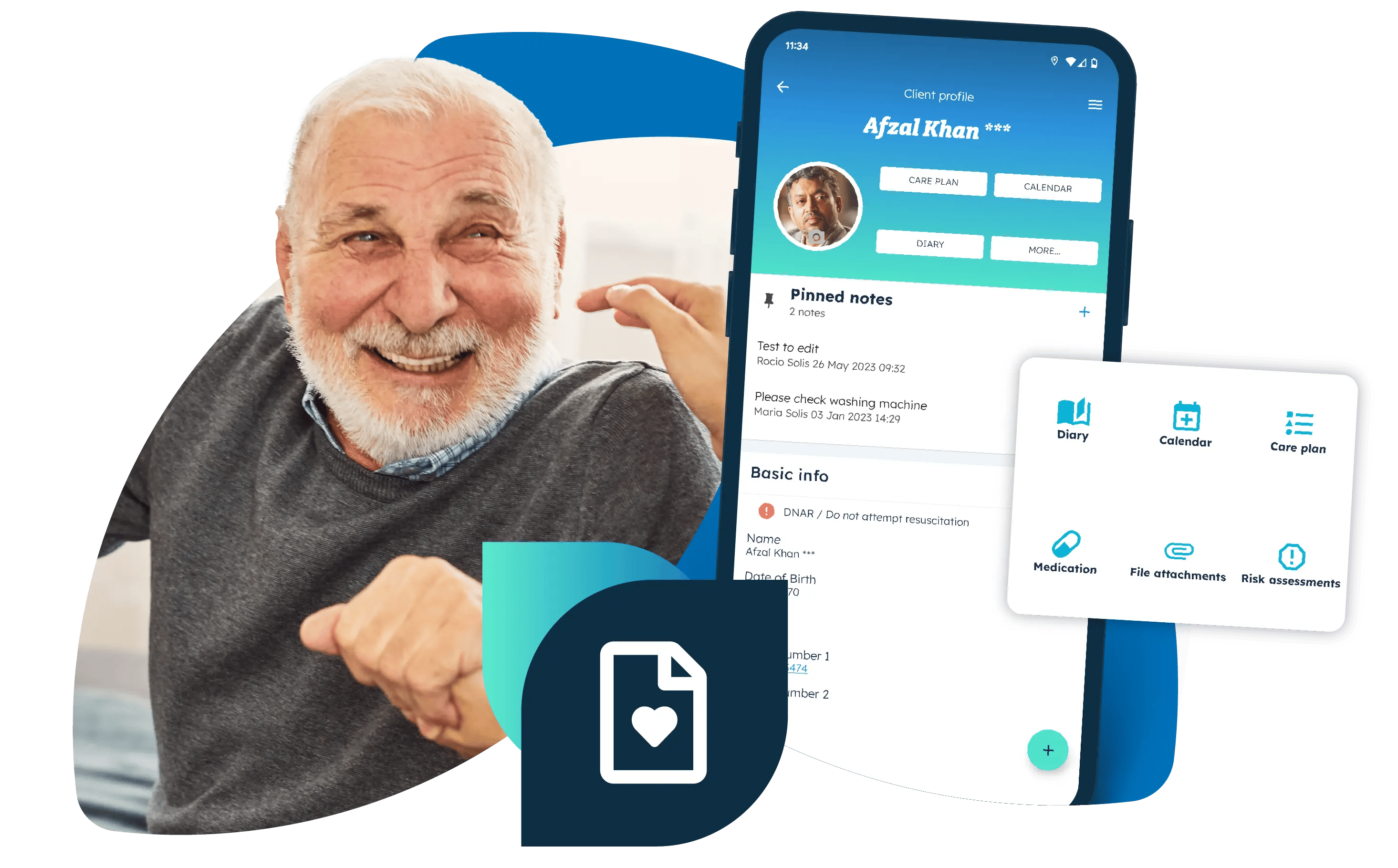
Digital social care records
Make time for the individual.
Nursebuddy’s digital care records are the place to store those little details that make all the difference when a carer visits. Viewable to domiciliary care workers within Nursebuddy’s mobile app, they help your clients feel understood and cared for. Things like:
-
Hobbies, interests and social clubs
-
What they used to do for work
-
Their preferred routines
-
Whether they live alone
-
Who else might be checking-in on them
-
Even a photo!
A client's electronic care record captures all the care essentials too, of course, like addresses, medical information and emergency contacts. Compliant with the PRSB 'About Me' standard.
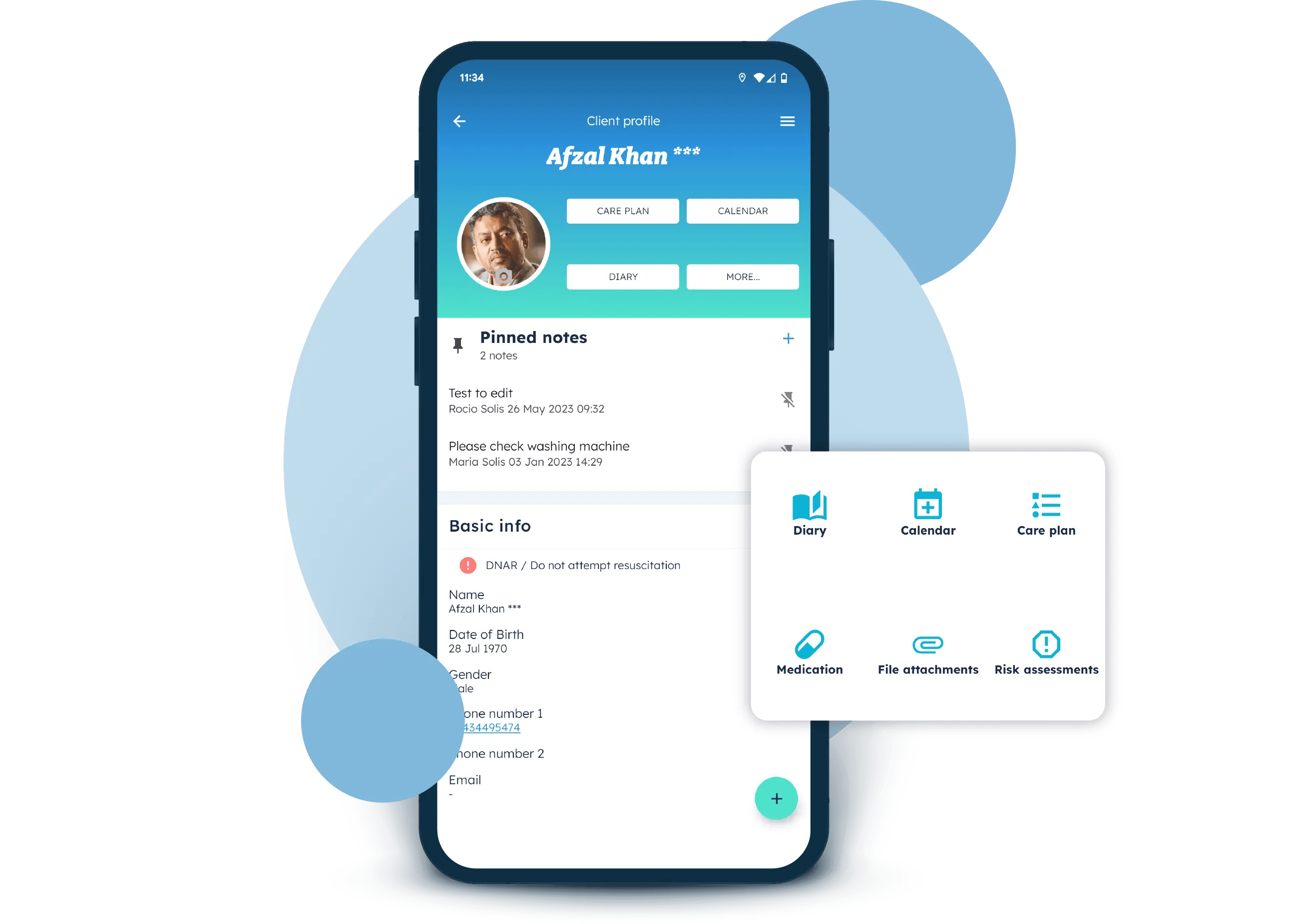
Digital care planning
Personalise client care.
Care plans are a fundamental, but sometimes time-consuming, part of how you care for people. Nursebuddy makes creating digital care plans fast and intuitive, while allowing you to tailor plans to individual client needs.
-
Use quick templates to standardise care plans with common information
-
Add and delete different care plan sections as you need
-
Use pre-defined tasks to quickly build out a care plan
-
Choose the priority of each care plan section to tailor the plan to your client
-
Lock the care plan, and set automated reminders for review.
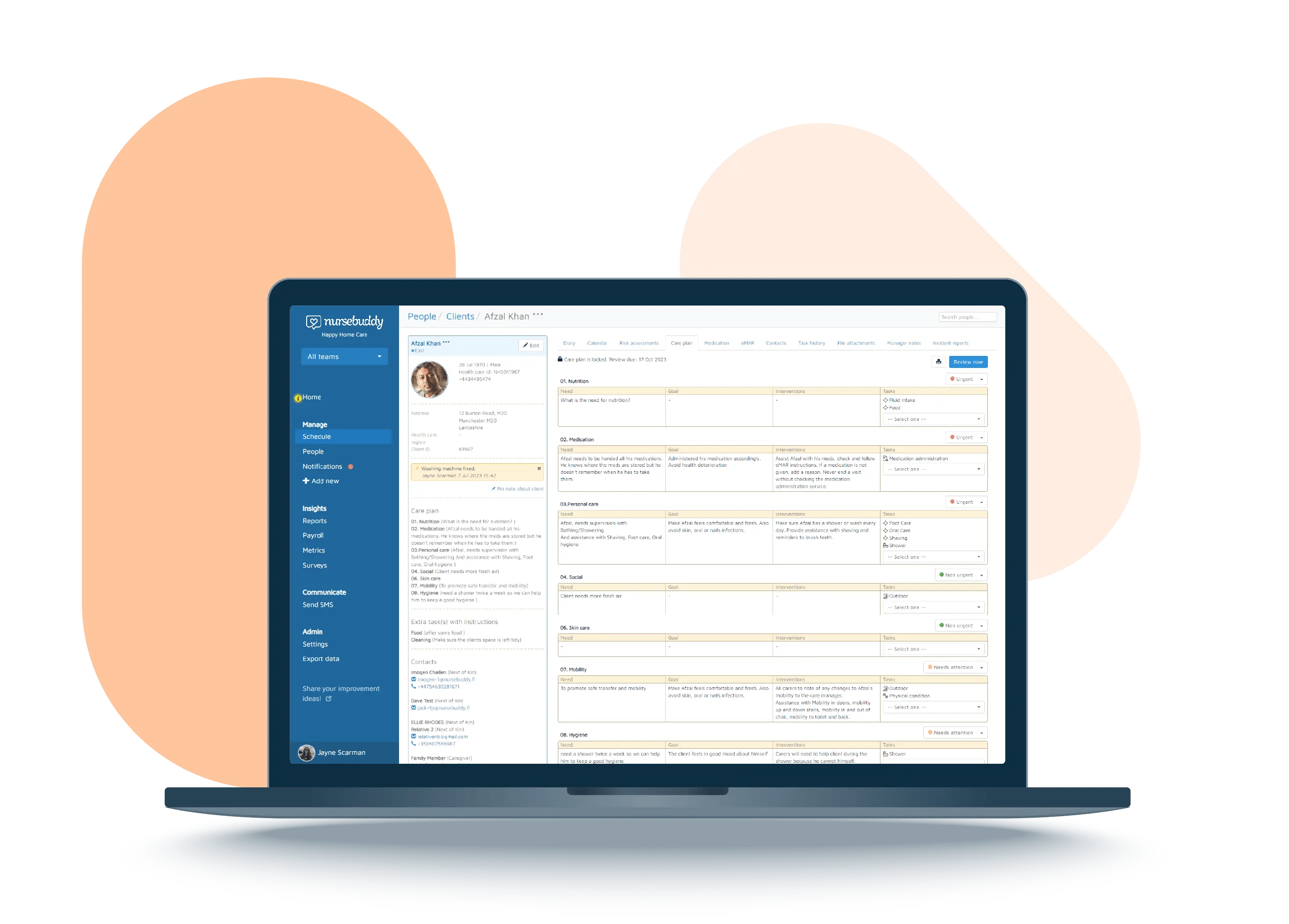
eMAR
Safe medication management.
Nursebuddy’s eMAR system can be set-up to reflect exactly how your care company manages medications and provides clear, reassuring guidance to your carers when attending a visit.
-
Create your own medication database
-
Handles both mandatory and PRN/as required medications
-
Specify dosages and repetitions
-
Use body maps to mark precisely where treatment should go
-
Daily notifications to review missed medications
-
Colour-coded eMAR charts to clearly show medications given
-
Customisable reason codes for medications not given
-
Automatic MAR sheet updates after each visit, with information pushed from our carer app
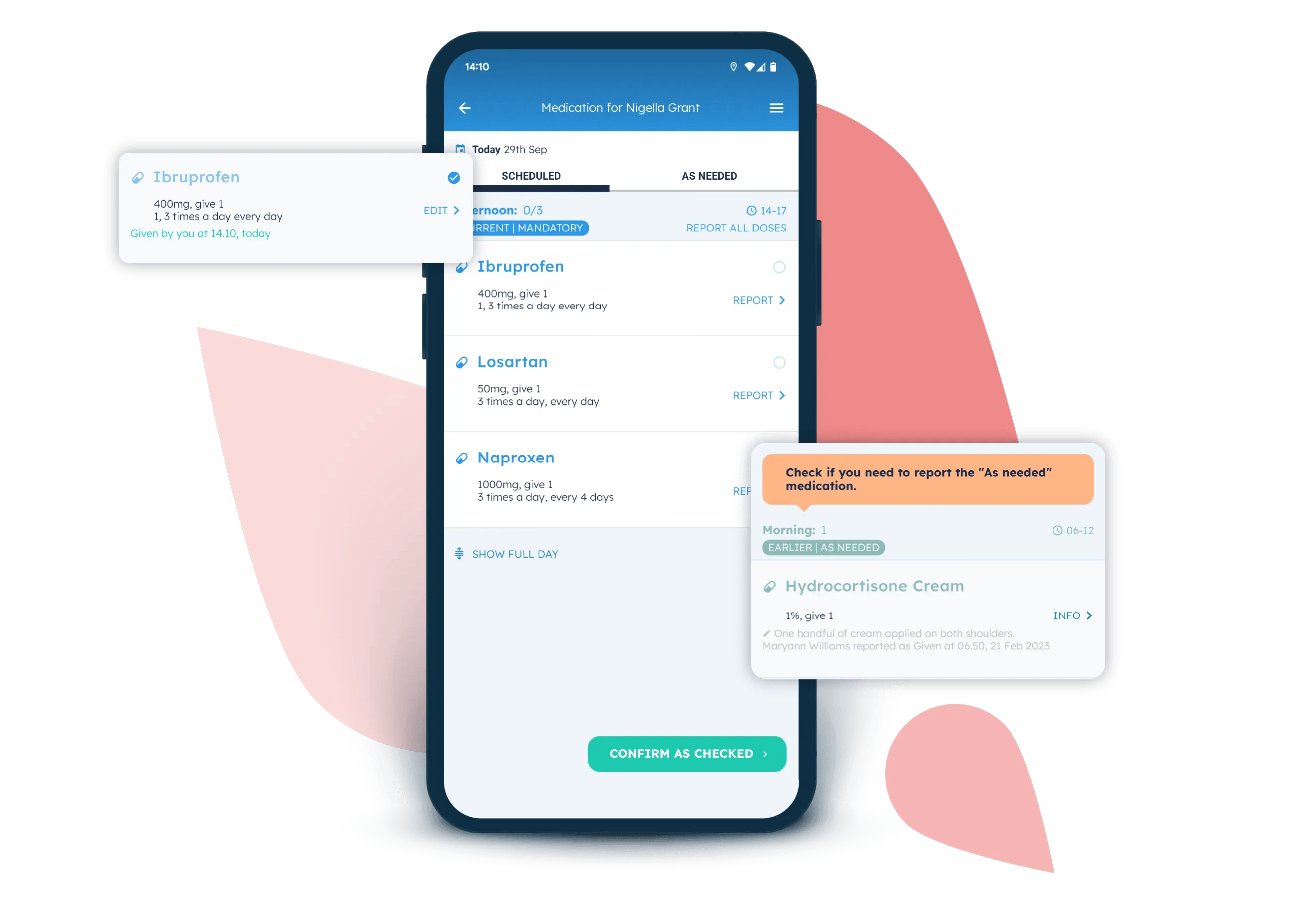
Homecare management software
All Nursebuddy features
A forward-looking care management platform for tomorrow's homecare companies.
Scheduling
Let Nursebuddy do the hard work when things change - as care always does
Carer App
Keep your domiciliary care teams person-centred, whilst keeping an eye on service delivery
Quality & Compliance
Instil high quality, compliant homecare into your systems and processes from the start.
Team Management
Build a high performing domiciliary care team with the skills and experience your clients need.
Finance
Stay profitable while paying and charging fairly for the homecare services you deliver.
Family Portal
Bring the whole homecare kylä together around each of your clients.
Testimonials
In their words
Discover why our customers love Nursebuddy.
Preferred carers
"Being able to assign specific carers to clients as the ‘Preferred Carer’ helps immensely and has improved the efficiency of the service we provide."
Partnership
"I love the way it is a working relationship with Nursebuddy and us, not just a package where you pay once, and you’ll never hear from them again."


FAQs
Your questions, answered.
Some of the things we get asked most often.
Is there a place to upload proper paperwork for each client?
There is an Attachments section in each client profile where you can upload a document that has been scanned, photographed or created on your own computer.
How do I log-in as a care manager?
If you have already signed up with Nursebuddy, you can find your log-in details in your Welcome Email.
Once you have your log-in details, you can log-in directly from our website. The login link is on the top menu.
Didn’t receive your login email? Send us a message to: support@nursebuddy.fi.
Book a demo
Take a closer look at Nursebuddy
Book an online demo of Nursebuddy with our friendly, knowledgeable team.
No hard selling. Just a genuine chat to find out how Nursebuddy could best help your homecare company.
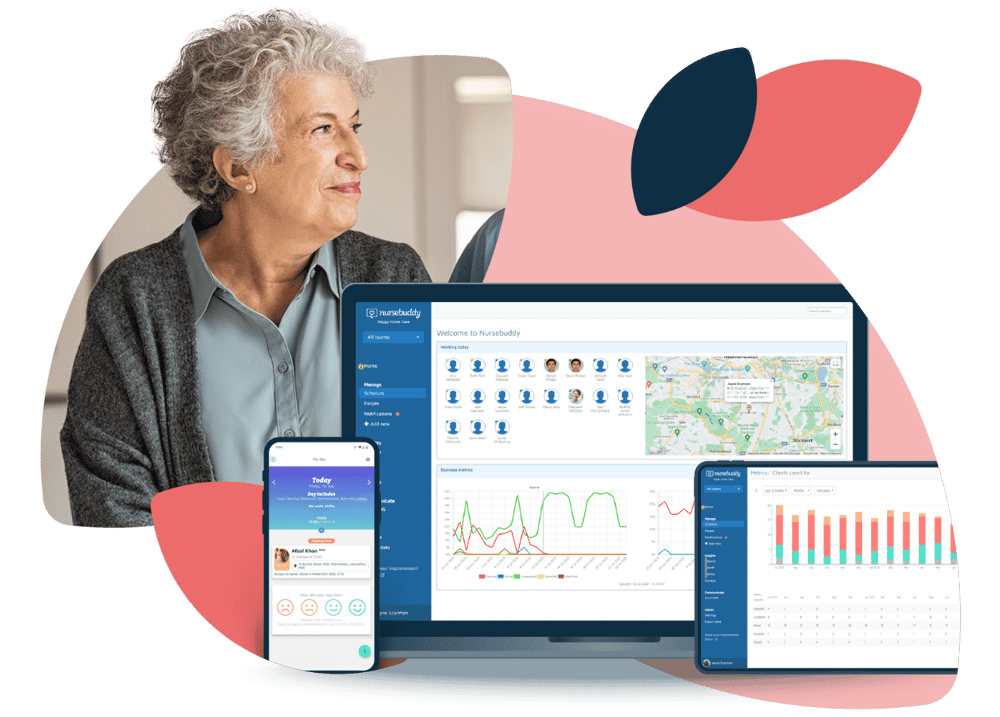
Library
From our blog
The freshest updates to our domiciliary care software we thought you might be interested in.


